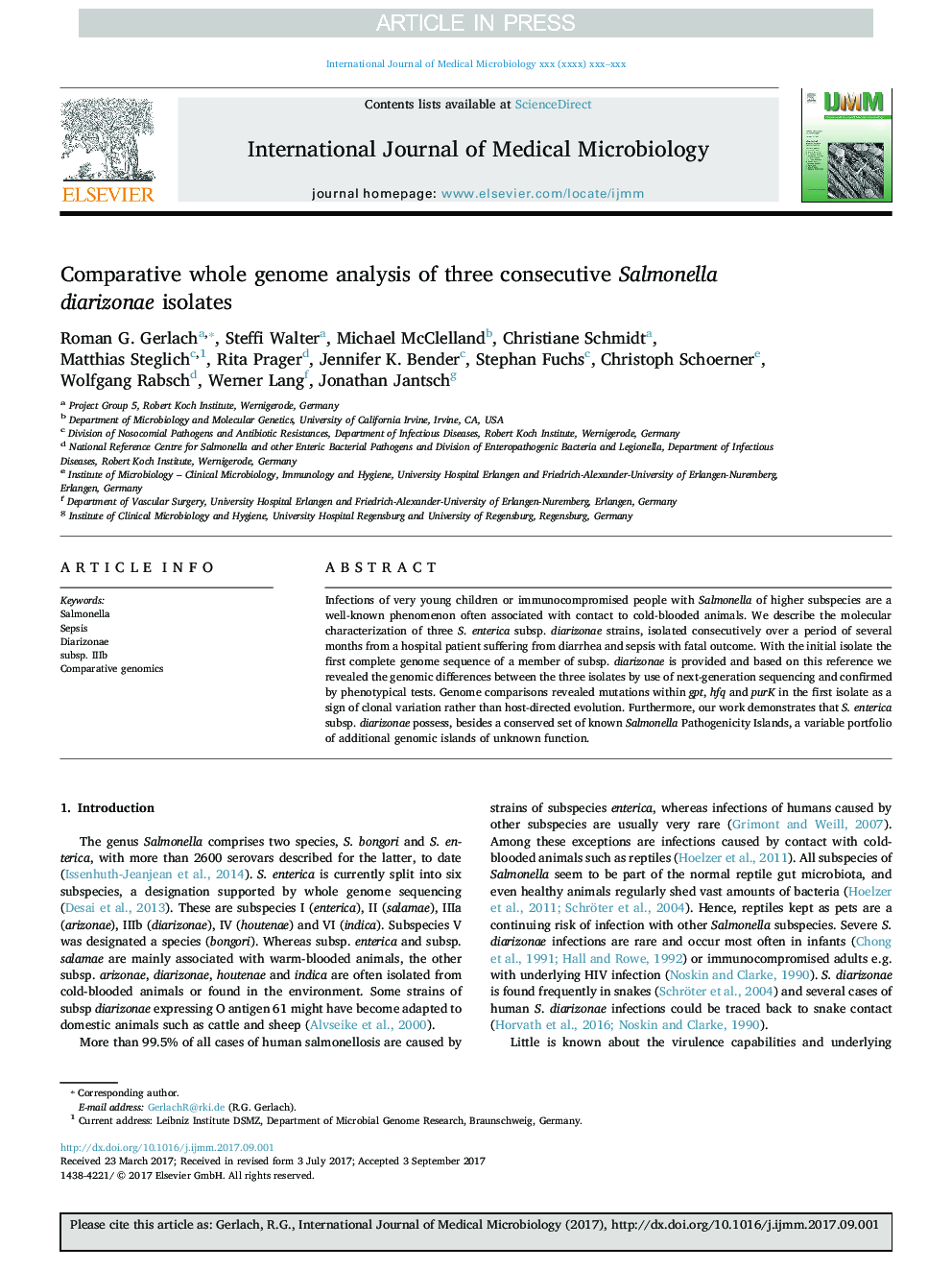| Article ID | Journal | Published Year | Pages | File Type |
|---|---|---|---|---|
| 8385075 | International Journal of Medical Microbiology | 2017 | 10 Pages |
Abstract
Infections of very young children or immunocompromised people with Salmonella of higher subspecies are a well-known phenomenon often associated with contact to cold-blooded animals. We describe the molecular characterization of three S. enterica subsp. diarizonae strains, isolated consecutively over a period of several months from a hospital patient suffering from diarrhea and sepsis with fatal outcome. With the initial isolate the first complete genome sequence of a member of subsp. diarizonae is provided and based on this reference we revealed the genomic differences between the three isolates by use of next-generation sequencing and confirmed by phenotypical tests. Genome comparisons revealed mutations within gpt, hfq and purK in the first isolate as a sign of clonal variation rather than host-directed evolution. Furthermore, our work demonstrates that S. enterica subsp. diarizonae possess, besides a conserved set of known Salmonella Pathogenicity Islands, a variable portfolio of additional genomic islands of unknown function.
Keywords
Related Topics
Life Sciences
Biochemistry, Genetics and Molecular Biology
Biochemistry, Genetics and Molecular Biology (General)
Authors
Roman G. Gerlach, Steffi Walter, Michael McClelland, Christiane Schmidt, Matthias Steglich, Rita Prager, Jennifer K. Bender, Stephan Fuchs, Christoph Schoerner, Wolfgang Rabsch, Werner Lang, Jonathan Jantsch,
